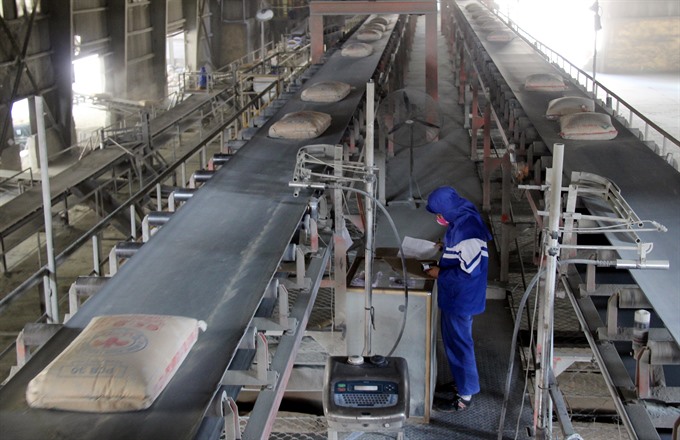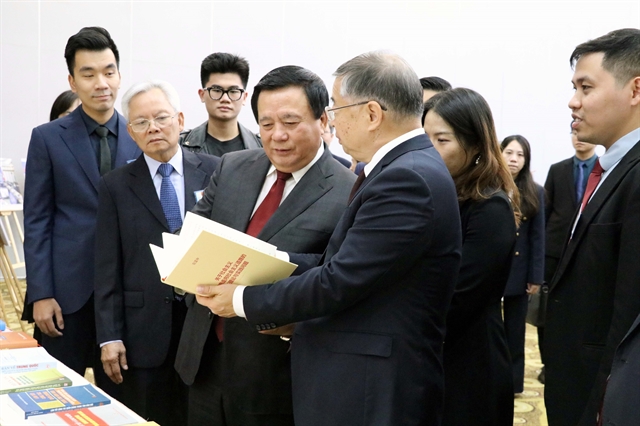 Economy
Economy

The country’s cement surplus this year could be 30 million tonnes and reach 35 million tonnes by 2020 if Việt Nam does not export cement.
 |
| A cement production line of La Hiên Cement Company. — VNA/VNS Photo Hoàng Nguyên |
HÀ NỘI — The country’s cement surplus this year could be 30 million tonnes and reach 35 million tonnes by 2020 if Việt Nam does not export cement.
Nguyễn Quang Cung, chairman of Việt Nam Cement Association (VNCA), told online newspaper Diễn Đàn Doanh Nghiệp (Business Forum) that total designed capacity of the cement industry was 88 million tonnes per year in 2016. The country’s total cement capacity would reach 120-130 million tonnes by 2020.
Meanwhile, domestic cement demand by 2020 was expected to be 82 million tonnes, leading to a surplus 36-47 million tonnes.
The association’s forecast showed that the country’s cement demand would be increased by 5-6 million tonnes per year.
By the end of last year, the cement industry added 6.8 million tonnes from Sông Lam Cement Plant’s first phase and Long Sơn Cement Plant. Another five cement projects are under construction and would become operational in 2020, adding 12.7 million tonnes to the sector.
Cung was quoted by the newspaper as saying that the cement oversupply was because the industry’s planning was backward. Real capacity turned out to be higher than what was estimated thanks to improvements in technologies.
He added that export prices of cement and clinker were sharply reduced due to fierce competition in the market. Cement oversupply in China was also 600-700 million tonnes, 7-8 times higher than that of Việt Nam.
Further, China, India and Pakistan were rushing to lower export price, causing a decrease in Việt Nam’s cement exports, he said, adding that the VNCA proposed the Government work with other countries to reduce import taxes and support transport costs for building materials including cement.
Figures from VNCA revealed that cement consumption in the local market in the first 11 months of the year was some 55.63 million tonnes, slightly increased by two per cent from the same period last year and meeting 87 per cent of the whole year’s target.
Cement and clinker exports reported a year-on-year increase of 27 per cent in the January-November period.
The chairman said cement producers should be active in searching for export markets.
Nguyễn Trần Nam, chairman of Việt Nam Real Estate Association, shared the opinion, saying the building material market in 2018 would face challenges as the number of new real estate projects would not be high, in addition to fierce competition from imported products.
Nam told a press meeting held in Hà Nội last month that the property market this year would see stable development.
He said consumption of many essential building materials such as cement, sand, brick and steels was slow in 2017.
Nam said Vietnamese producers of building materials should have suitable production plans while renewing technologies towards friendly environmental products.
Firms were also asked to improve competitiveness by reducing prices and enhancing branding, he added. — VNS




.jpg)